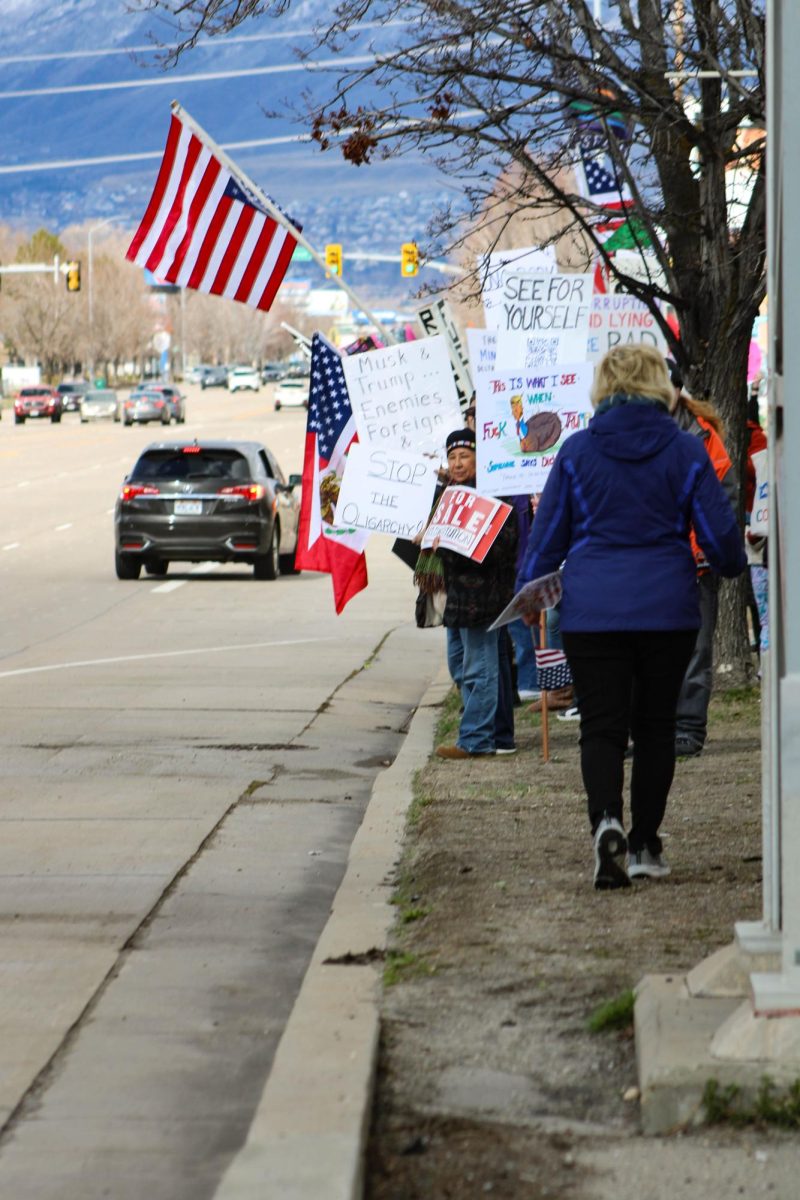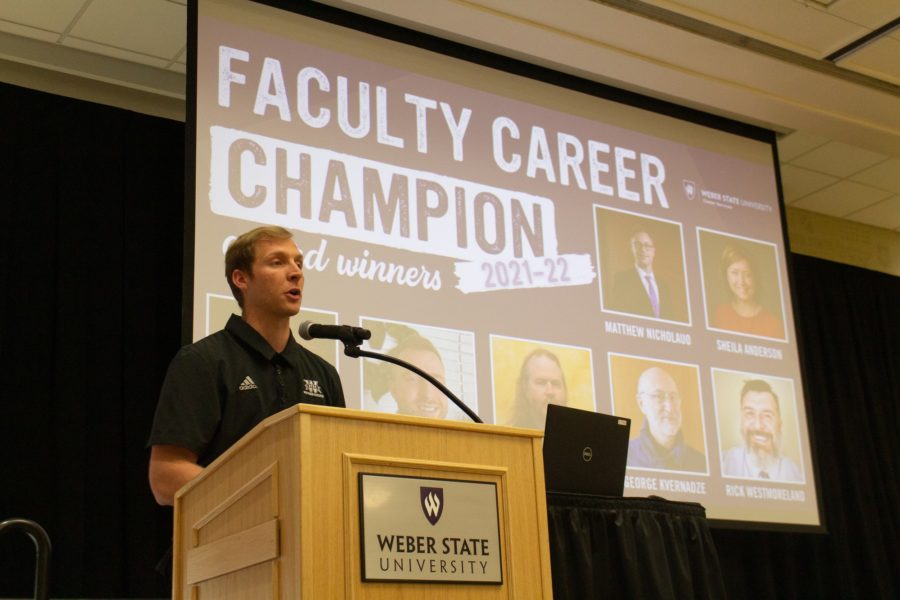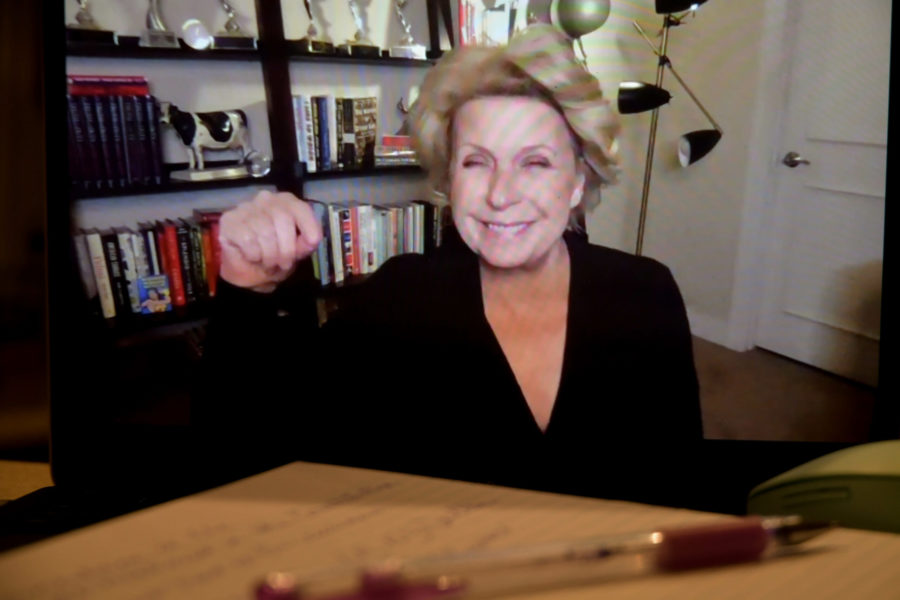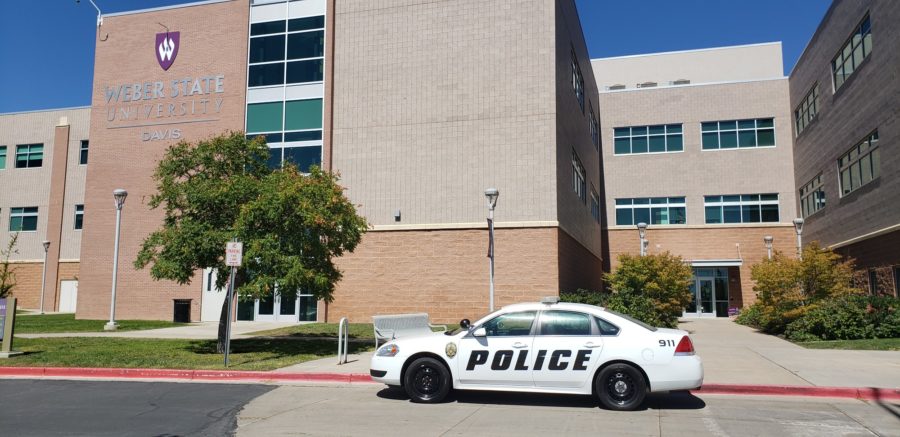
English professor Mike Vause sits in a wheelchair at the airport. Vause took a fall while mountaineering and conducting research in Scotland.
Mike Vause fell, first hitting his right eye on a boulder, which made it swell shut, making him unable to see and stop himself from continuing down the ridge. He bounced off boulders the size of bowling balls, some the size of television screens, stopping just short of falling down a 15-foot dropoff.
On June 25, the Weber State University English professor suddenly tripped and fell 300 feet to a peak below while he was in Scotland doing mountaineering research for a book he is writing on George Mallory’s 1924 Everest exhibition on the Black Cuillin of the Isle of Skye.
The first day on the Isle of Skye, Vause went to Cooley Lounge.
“We sat in the same chairs, same tables as these guys sat at, and went through all the visitors’ books from the mid-19th century up to the middle 1930s,” Vause said. He described the energy as being very cool. “That’s one of the neat things — you can feel that when you are in the places those guys have stayed.”
The next day when Vause was injured, his group had hiked to a loch, where he could see many routes Mallory had pioneered. After taking photos of the routes, they broke into two groups on their way up to Sgurr Alasdair, the highest point on the Black Cuillin. Part of the way up, Vause’s group members decided to turn back; however, Vause was only a half hour behind the other group, which included his wife, Janis, and chose to try and catch up to them.
He said he had finally come to a point where he could not see or hear the other group any longer and was getting pelted by the rain and wind, so he decided to turn back. He tripped on his descent.
“I felt myself start to cartwheel and roll, and I went for 100 meters or more,” Vause said.
With his right eye swollen shut, he lay on the rocks, unable to move his left arm and leg. When he was able to wipe the blood from his left eye, he could see his left leg was split open, his bone protruding from the knee.
Vause was able to pull himself into a sitting position using his right arm and leg. Had he not be able to do that, he said, he would have fallen unconscious and probably died.
“I was wet and cold, and the wind was blowing and I was getting hypothermic,” Vause said. “There was no way I could get out on my own power. I’ve been climbing for years and have read thousands of accounts of mountaineering accidents and disasters. Really, that’s the whole purpose of education . . . to figure out ways to apply that knowledge.”
As Vause sat up, he was able to see a man standing below, and he yelled for help. It just so happened that the man was head of the mountain rescue and was able to radio in for a rescue crew. Within a half hour, Vause had multiple people working together to get him stabilized and prepared for his descent.
While the rescue crew surrounded Vause, the group he’d been trying to catch up with came upon the accident. Standing about 40 feet away, they stopped to see if they could help, not knowing the injured man was Vause. They started to pass him by when suddenly Ian Mitchel, the Scottish guide, recognized him and yelled to Janis Vause.
It took seven hours for the rescue team to get Vause off the mountain and into the helicopter, which took him to the small hospital of the Isle of Skye. Knowing the doctors could only do so much, Vause and his wife climbed into their tiny rental car and drove almost seven hours to the closest airport to get him to the U.S.
Vause said he is thankful to be in the comfort of his home in Ogden and is slowly recovering, awaiting surgery on his shoulder, where he has ripped tendons. He is receiving antibiotics intravenously and goes into a hyperbolic chamber every day for the infection in his knee, and will more than likely have knee surgery in the coming months.
“Vause is very ambitious, whether it is with his writing, his teaching or his climbing, and he is going to do what he thinks he needs to be doing,” said Vause’s longtime friend and WSU colleague, Carl Porter, executive director of Academic Support Centers and Programs. “He’ll be up climbing again soon.”













